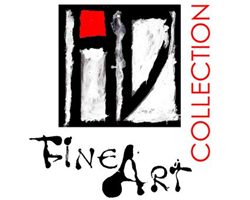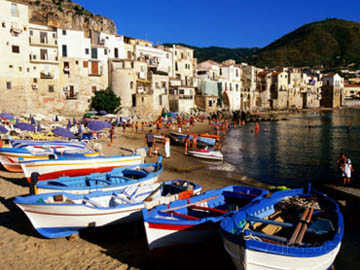Product Description
Joseph Raskin “Seaside scene” Oil on Canvas c. 1920 -1925


JOSEPH RASKIN (1897-1981) USA
Seaside scene c. 1920 -1925
Oil on canvas, gold leaf frame
Signed: Jos. Raskin (lower left)
For more information see: Who Was Who in American Art,
(Madison, Conn.: Sound View Press, 1985), p. 505
Canvas: 25 1/4” x 21 1/4”
Frame: 31 1/4” x 26 3/4”
Price: $35,000
Born in Nogaisk, Russia, Joseph Raskin made a name for himself as a painter in New York City, where he was also recognized as an etcher, teacher and writer. He studied at the National Academy of Design and, in 1921, received a fellowship from the Louis Comfort Tiffany Foundation. A member of the American Artists Congress, Raskin’s work was exhibited at the Schervee Gallery (Boston) in 1927, Tricker Gallery in 1939, the Schneider-Gabriel Gallery in 1941, Steinway Hall in 1942, and the American Artists Association in 1945. Raskin’s work may be found in several museum collections including the Carnegie Institute in Pittsburgh, the Pennsylvania Academy of Fine Arts in Philadelphia, the Virginia Museum of Fine Arts in Richmond, and the Corcoran Gallery of Art and National Academy of Design, both in Washington, D.C.
Joseph Raskin “Seaside scene” Oil on Canvas c. 1920 -1925
You must be logged in to post a comment.
JEAN MARION GATES HALL (1911-2001) USA
Napa Valley 1940
Oil on canvas, original wood frame
Signed: with her monogram initials JGH (lower right)
Marked on back: Jean Gates Hall, June 18, 1940, Napa Valley
Canvas: H: 14″ x W: 17 1/4″
Framed: H: 17 1/2″ x W: 20 1/2″
Price: $4,250
Born in Memphis, TN on May 19, 1911. Jean Gates studied at the Cummings School of Art in Des Moines. At age 14 she moved to Los Angeles with her family. There she continued at the Chouinard Art School while working for Warner Bros, Walt Disney, and Mintz Studios. Upon moving to San Francisco, she married writer James D. Hall in 1938. Her illustrations were used in her husband’s children’s books. She established a studio in the “Monkey Block” (now the Transamerica Pyramid) and was active in the local art scene. She later earned her B.A. degree at San Jose State University (1955) and M.A. degree at UC Davis (1966). Working in oil and watercolor, her painting style and subject matter evolved with the years from descriptive realism to linear pictures, and finally an entirely new medium called Magpage. Mrs. Hall was a resident of Oakland in the 1980s and died in Cedar Ridge, CA on June 23, 2001.
Exhibitions: Iowa State Fair, 1926; California State Fair, 1937; GGIE, 1939; Paul Elder Gallery (SF), 1939 (solo); NMAA, 1941; SFMA, 1942 (solo); De Young Museum, 1944 (solo); California WC Society, 1945-53; UC Davis, 1946, 1965 (solos); Kingsley Art Club (Sacramento), 1965.
EDMUND F. WARD (b. 1892 – 1991) USA
“The Swimming Hole” c. 1930
Oil on canvas
Marks: signed Edm. F. Ward (lower right); partial labels verso:Westchester Arts and Crafts Guild; 4 Edmund F. Ward
For more information on the artist see: Who Was Who in American Art,Peter Hastings Falk, ed. (Madison, Conn.: Sound View Press, 1985), p. 658.
Canvas H: 18” x W: 24”
Framed H: 27 9/16” x W: 33 9/16”
Price: $14,000
Ward studied at the Arts Student’s League with Edward Dufner, George Bridgeman, and Thomas Fogarty. He was an illustrator for several national magazines and books. In 1925, Ward exhibited an award winning work at the Art Institute of Chicago. He is perhaps best known for his WPA mural in the Federal Building, White Plains, New York.

Reviews
There are no reviews yet, would you like to submit yours?